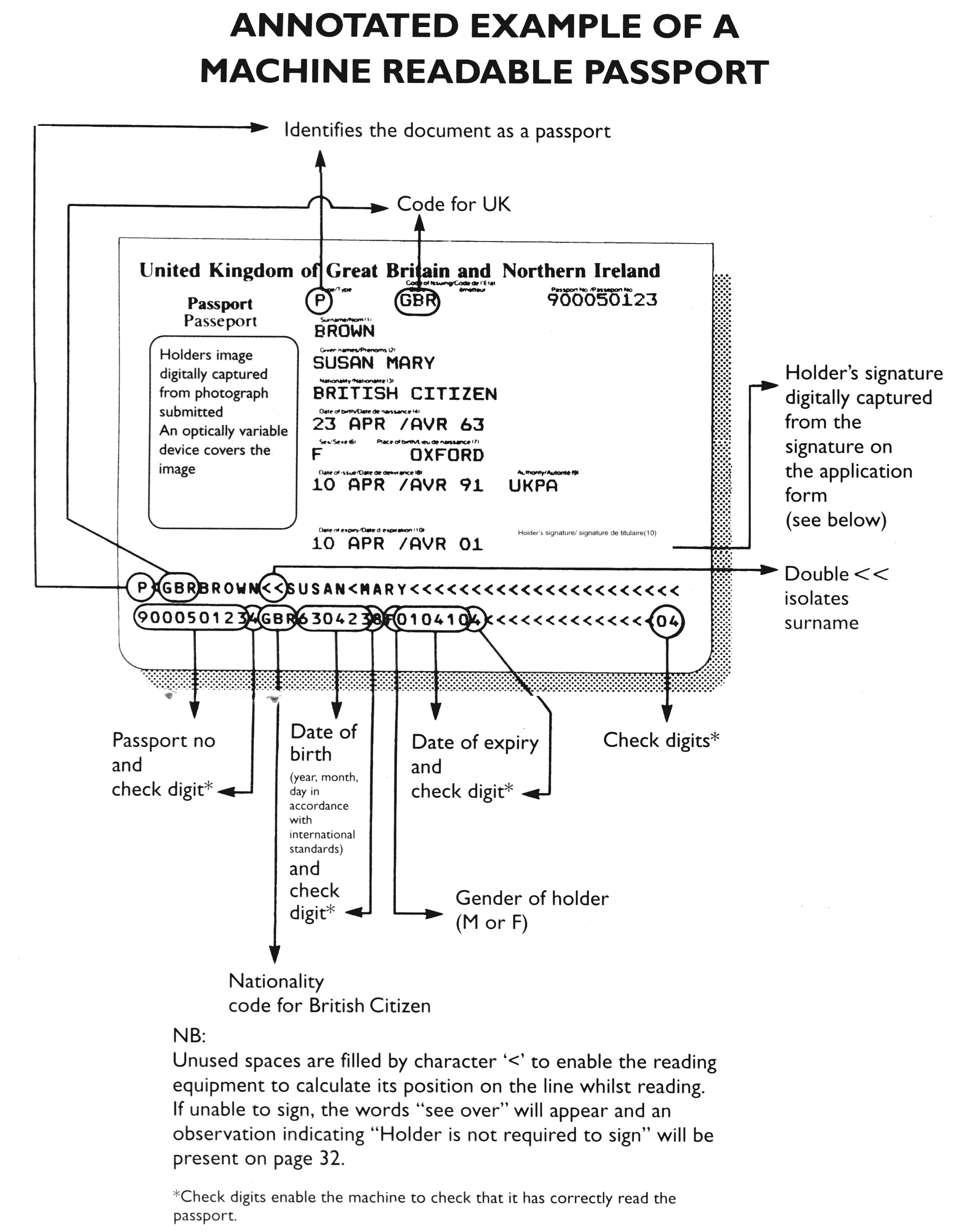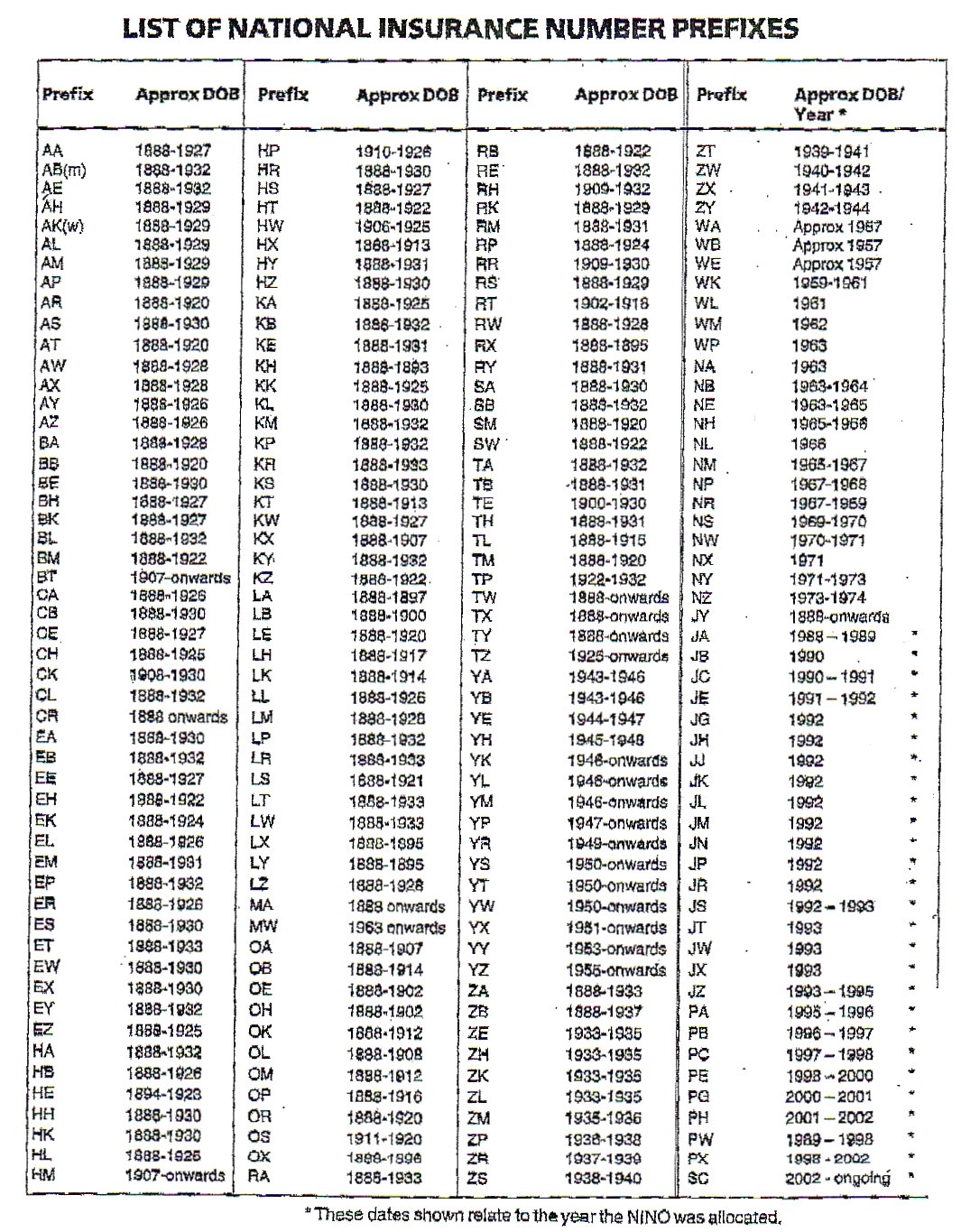
Please Donate To Help Us Run This Site
Useful Bits - in no particular order
(This page was last updated on the 05/02/2025)Cookies
How To Check The Validity Of UK Passports
How To Check The Validity Of UK VAT Registration Numbers
Understanding UK National Insurance Numbers
How To Identify Your Mobile Phone
Cookies
Cookies are basic text files which contain data, usually relating to your visit to a website. To find out what a website is putting in the cookie in relation to your visit, then you can use the same process as above for finding when a website was last updated but use the code of javascript:alert("Cookies:"+document.cookie) in the properties of the Favorite instead.
How To Check The Validity Of UK Passports
Click on the below picture for details about the details shown on a UK Passport.
How To Check The Validity Of UK VAT Registration Numbers
To check the validity of UK VAT registration numbers carry out the following calculations:
Write down the first seven digits of the number, multiply the first digit by eight, second digit by seven, etc, until the seventh digit, which should be multiplied by two, and then add up the sum of the multiplied numbers.
You then subtract 97 from the total as many times as needed to arrive at a negative number. The negative number should be the same as the last two digits of the VAT number - if it is not, the number is invalid.
It is important to note that this test only checks whether the number is valid, not that it belongs to the person or company using it.
Understanding UK National Insurance Numbers
1. Must be 9 characters.
2. First 2 characters must be alphabetical.
3. Next 6 characters must be numeric.
4. Final character can be A, B, C, D or space.
5. First character must not be D, F, I, Q, U or V.
6. Second characters must not be D, F, I, O, Q, U or V.
7. First 2 characters must not be combinations of GB, NK, TN or ZZ (the term combinations covers both GB and BG etc.)
Click on the below picture for details about the Prefix letters used in National Insurance Numbers.
PZ & PY - These are not valid numbers for Department of Social Security purposes
MW - This was used as a prefix for migrant workers between 1980 and 1987 and should no longer be in use
PW - As a prefix this is allocated to people without a NINO but needs to claim a benefit
CR - As a prefix this denotes a confused record and is only used when queries regarding accounts remain
GY & JY - Denote Jersey and Guernsey N.I. Numbers
HM & BT - These usually denote Northern Ireland N.I. Numbers
D, F, I, Q, U & V are not used as the first or second letter of a NINO prefix
How To Identify Your Mobile Phone
Every mobile phone has a unique serial number. This serial number is called the IMEI Number (International Mobile Equipment Identity), which is 15 digits long and can usually be located underneath the phones battery.
You can also access this number electronically by keying in *#06# (asterisk hash 0 6 hash) on the phones handset and the IMEI Number will then be displayed on the screen.
You can then check the IMEI Number with a number of different services, to make sure that the mobile phone and IMEI Number match and that the mobile phone has not been reported as stolen.



